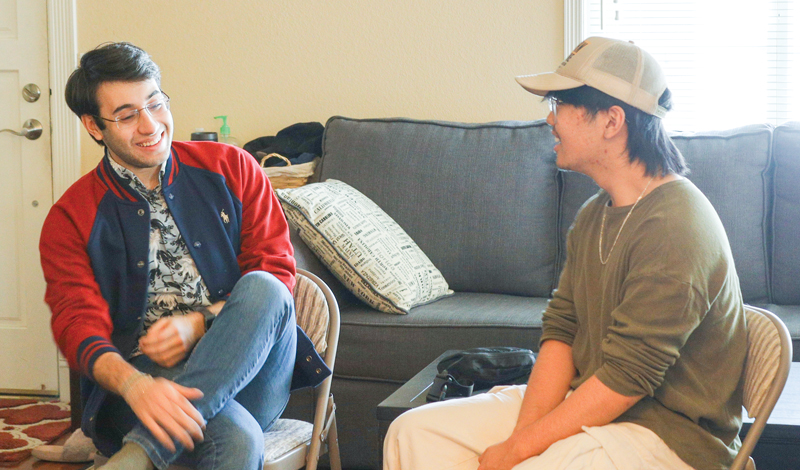Members:
• should be district through national youth leaders.
• have their own copy of The Wisdom of the Lotus Sutra, vol. 3.
• read the assigned material prior to each meeting.
Syllabus:
The Wisdom of the Lotus Sutra, vol. 3, pp. 93–126
Part Two: “Devadatta” Chapter
• The Dragon Girl’s Enlightenment Is a Grand Declaration of Equality
Supplementary Materials:
• The Lotus Sutra and Its Opening and Closing Sutras, pp. 221–28
• The Record of the Orally Transmitted Teachings, pp. 100–09
Background
The Story of the Dragon Girl’s Enlightenment
At the bottom of the ocean lived the Dragon King Sagara and his 8-year-old daughter. One day, the Buddha’s disciple Manjushri went to the dragon king’s palace to expound the Lotus Sutra. The dragon girl quickly attained enlightenment upon hearing the Lotus Sutra of the Wonderful Law.
Back at the assembly on Eagle Peak, Bodhisattva Wisdom Accumulated and the venerable Shariputra couldn’t believe it to be true.
Wisdom Accumulated wondered how the dragon girl could achieve enlightenment instantly when it took Shakyamuni Buddha immeasurable kalpas of harsh and difficult practices.
Of her enlightenment, Shariputra says, “This is difficult to believe” (LSOC, 227).
In response, the dragon girl turned to them both and said, “Employ your supernatural powers and watch me attain Buddhahood” (LSOC, 227).
In an instant, she carried out all the practices of a bodhisattva, attained enlightenment and expounded the Wonderful Law for the living beings in the ten directions. Upon hearing her preach the Law, immeasurable living beings also attained enlightenment.
Seeing this, Bodhisattva Wisdom Accumulated, Shariputra and all others at the assembly “silently believed and accepted these things” (LSOC, 228).
By challenging their limited points of view, the dragon girl revealed the true power of the Lotus Sutra, through which anyone, just as they are, can attain Buddhahood.
—Prepared by the SGI-USA Study Department
Key Concept
The Dragon Girl Opens the Way for All People
In the Lotus Sutra, prior to the “Devadatta” chapter, Shakyamuni expounded the teaching of the mutual possession of the Ten Worlds, revealing for the first time that anyone can attain Buddhahood.
However, accepting that as the truth is much more difficult when confronting deeply rooted prejudices. The dragon girl broke through every preconceived disbelief held by those around her—including the Buddha’s disciples.
According to the beliefs at the time, the dragon girl seemed the least likely person ever to become enlightened. In particular, there are three reasons that Shariputra and Bodhisattva Wisdom Accumulated cite as to why the dragon girl shouldn’t be able to attain Buddhahood:
- She has the form of an animal.
- She is a woman.
- She is very young, only 8 years old.
Responding to these doubts, Ikeda Sensei explains that discriminating against even one person means denying all others access to Buddhahood:
The Lotus Sutra teaches that all living beings possess the world of Buddhahood. There is not even a hint of discrimination toward women. If it were true that women could not become Buddhas, then the doctrine of three thousand realms in a single moment of life would fall apart. To deny three thousand realms in a single moment of life is to deny the possibility of anyone’s attainment of Buddhahood. Therefore, the dragon girl’s enlightenment signifies not only the enlightenment of all women but the enlightenment of all men as well. (The Wisdom of the Lotus Sutra, vol. 3, p. 99)
• • •
The dragon girl was perceived as having virtually no chance of ever attaining Buddhahood because she was a woman, was very young and had the body of an animal. She was, however, the first to attain Buddhahood in her present form. This is very significant. The dragon girl’s enlightenment in an oppressively discriminatory society amounts to a ringing declaration of human rights. (WLS-3, 122)
—Prepared by the SGI-USA Study Department
Wisdom Into Action
Expanding My Life to Do More

Nolan Munce
Farmington, Michigan
Q: How does Buddhist study enhance your SGI-USA leadership responsibilities?
The things we do as youth leaders—encourage others, share Buddhism and make friends with people in our communities—aren’t easy. Still, our training in the SGI and study of Nichiren Buddhism help us develop into capable people.
In a recent Ikeda Wisdom Academy lecture, we studied the six difficult and nine easy acts. That hit home for me. It put into perspective how our toughest obstacles are pretty “easy” compared to practicing the Lotus Sutra.
Sometimes, after meeting someone, I think, Man, I really should’ve shared Buddhism with that guy! So, it can be challenging. But then, I chant and realize that we create tremendous value through taking action based on faith in the Gohonzon—that’s the one thing that unlocks everything else!
Keeping that in mind, I want to lay the foundation for expanding our castles of kosen-rufu, starting with raising youth. But to say that I’m starting something isn’t correct—I’m standing on the shoulders of the members who paved the way before me.
I’m striving to be the best leader, father, husband, friend, doctoral student and working professional. And I’m determined to be the kind of person everyone around me can trust and depend on for support.
LOOKING FORWARD: July Syllabus
The Wisdom of the Lotus Sutra, vol. 3, pp. 129–64
Part Three: “Encouraging Devotion” Chapter
• A Disciple Battles the Three Powerful Enemies
You are reading {{ meterCount }} of {{ meterMax }} free premium articles

